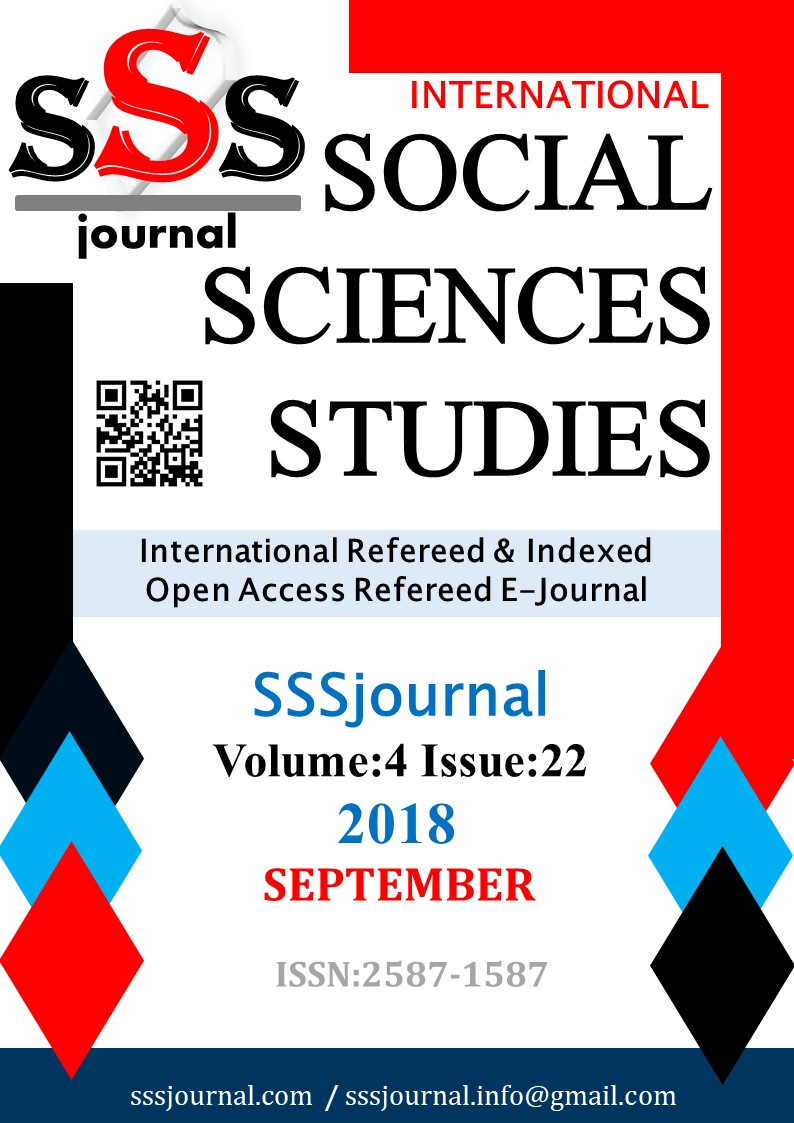Author :
Abstract
Bu çalışmanın amacı; 23 AB üye ülkesi ile AB aday ülke konumunda olan Türkiye’nin sağlık sis-teminin göreli teknik etkinlik düzeyini Veri Zarflama Analizi aracılığıyla analiz etmektir. Ayrıca çalışmada teknik etkin olmayan ülkelerin teknik etkinliğe ulaşmaları için referans alabilecekleri ülkelere ilişkin bir tespit de sunulmaktadır. Uygulama sonuçlarına göre; 2013 yılında en yüksek teknik etkinlik değerine sahip olan ülkeler; İsveç, İrlanda, Güney Kıbrıs ve Türkiye olurken, sıra-sıyla en düşük teknik etkinlik değeri Avusturya, Almanya ve Slovakya’da gerçekleşmektedir.
Keywords
Abstract
The purpose of this study is to analyze relative level of technical efficiency of health system of 23 EU members and Turkey as an EU candidate through data envelopment analysis. In addition, some evaluation is represented on reference countries in which technical ineffective countries aimed to be technical effective. According to application results countries with the highest technical effi-ciency value in 2013 are Sweden, Ireland, Cyprus and Turkey whereas the countries with lowest value of technical efficiency are Austria, Germany and Slovakia respectively.
Keywords
- Afonso, A., & Aubyn, M. (2005), “Non-Parametric Approaches to Education and Health Efficiency in
- Afonso, A., & Aubyn, M. (2005), “Non-Parametric Approaches to Education and Health Efficiency in OECD Countries,” Journal of Applied Economics, 8 (3), 227-246.
- Afonso, A., & Aubyn, M. (2006), “Relative Efficiency of Health Provision: A DEA Approach With Non-Discretionary Inputs”, Working Papers, Department of Economics At The School Of Economics And Management (ISEG), Technical University of Lisbon.
- Avkıran, N. K. (2001), Investigating Technical and Scale Efficiencies of Australian Universities through Data Envelopment Analysis. Socio-Economic Planning Sciences, 35, 57-80.
- Banker, R. D., Conrad, R. F., & Strauss, R. P. (1986), A Comparative Application of Data EnvelopmentAnalysis and Translog Methods: An Illustrative Study of Hospital Production. Management Science, 32 (1), 30-44.
- Bowlin, W. F. (1998), Measuring Performance: An Introduction to Data Envelopment Analysis (DEA). The Journal of Cost Analysis, 15 (2), 3-27.
- Cazals, C., Florens, J.-P., & Simar, L. (2002), Nonparametric Frontier Estimation: A Robust Approach. Journal of Econometrics, 106 (1), 1–25.
- Charnes, A., Cooper, W. W., & Rhodes, E. (1978), Measuring the Efficiency of Decision Making Units. European Journal of Operational Research, 2, 429-444.
- Charnes, A., Cooper, W. W., & Rhodes, E. (1981), Evaluating Program and Managerial Efficiency: An Application of Data Envelopment. Management Science, 27 (6), 668-697.
- Chu Ng, Y. (2008), “The Productive Efficiency of The Health Care Sector of China”, The Review of Regional Studies, 38 (3), 381-393.
- Cinemre, N. (2003), Doğrusal Programlama. İstanbul: Beta Basım Yayım Dağıtım A.Ş.
- Cingi, S., & Tarım, A. (2000), Türk Banka Sisteminde Performans Ölçümü: DEA-Malmquist TFP Endeksi Uygulaması. TBB Araştırma Tebliğleri Serisi 1.
- Deprins, D., Simar, L., & Tulkens, H. (1984), Measuring Labor-Efficiency in Post Offices. M. Marchand, P.Pestieau, & H. Tulkens (Ed.), The Performance of Public Enterprises: Concepts and Measurement (243-268). Amsterdam: North-Holland.
- Dyson, R. G., Allen , R., Camanho, A. S., Podinovski, V. V., Sarrico , C. S., & Shale, E. A. (2001), Pitfalls and Protocols in DEA. European Journal of Operational Research, 132 (2), 245-259.
- Farrell, M. J. (1957), The Measurement of Productive Efficiency. Journal of the Royal Statistical Society, 120 (3), 253-290.
- Farrell, M. J., & Fieldhouse, M. (1962), Estimating Efficient Production Functions Under Increasing Returns to Scale. Journal of the Royal Statistical Society, 125 (2), 252-267.
- Ganley, J. A., & Cubbin, J. S. (1992), Public Sector Efficiency Measurement: Application of Data Envelopment Analysis. The Netherlands: North-Holland.
- Golany, B., & Roll, Y. (1989), An Application Procedure for DEA. Omega, 17 (3), 237-250.
- Gonçalves, A., Noronha, C., Lins, M., & Almeida, R. (2007), “Data Envelopment Analysis For Evaluating Public Hospitals İn Brazilian State Capitals”, Rev Saúde Pública, 41 (3), 1-8.
- Güran, M. C. (2005), Kamu Hizmetlerinde Performans Ölçümü: Türkiye'deki Kamu Üniversiteleri için Bir Performans Ölçümü Uygulaması. Ankara: Hacettepe Üniversitesi Yayınları.
- Mirmirani, S., & Lippmann, M. (2003), “Health Care System Efficiency Analysis of G12 Countries,” International Business & Economics Research Journal, 3 (5), 35-42.
- Özden, Ü. H. (2008), Veri Zarflama Analizi (VZA) ile Türkiye’deki Vakıf Üniversitelerinin Etkinliğinin Ölçülmesi. İstanbul Üniversitesi İşletme Fakültesi Dergisi, 37 (2), 167-185.
- Seiford, L. M. (1996), Data Envelopment Analysis: The Evolution of the State of the Art (1978-1995). The Journal of Productivity Analysis, 7 (2-3), 99-137.
- Spinks, J., & Hollingsworth, B. (2005), “Health Production And The Socioeconomic Determinants of Healthin OECD Countries: The Use of Efficiency Models”, Working Paper, Centre For Health Economics, Monash University.
- Tandon, A. (2005), Measuring Efficiency of Macro Systems: An Application to Millennium Development Goal Attainment, Asian Development Bank, Phillippines.
- Tarım, A. (2001), Veri Zarflama Analizi: Matematiksel Programlama Tabanlı Göreli Etkinlik Ölçüm Yaklaşımı. Ankara: Sayıştay Yayınları.
- Vassiloglou, M., & Giokas, D. (1990), A Study of the Relative Efficiency of Bank Branches: An Application of Data Envelopment Analysis. Journal of the Operational Research Society, 41 (7), 591-597.





